Cyrene Reef never fails to surprise us. Seated in a major shipping lane surrounded by the container terminal on the mainland and petrochemical plants on two island, there is always something interesting to see during each intertidal trip despite its location.
What a large
Astropecten sp. seastar I found trying to burrow itself into the sand. It is as big has my hand!
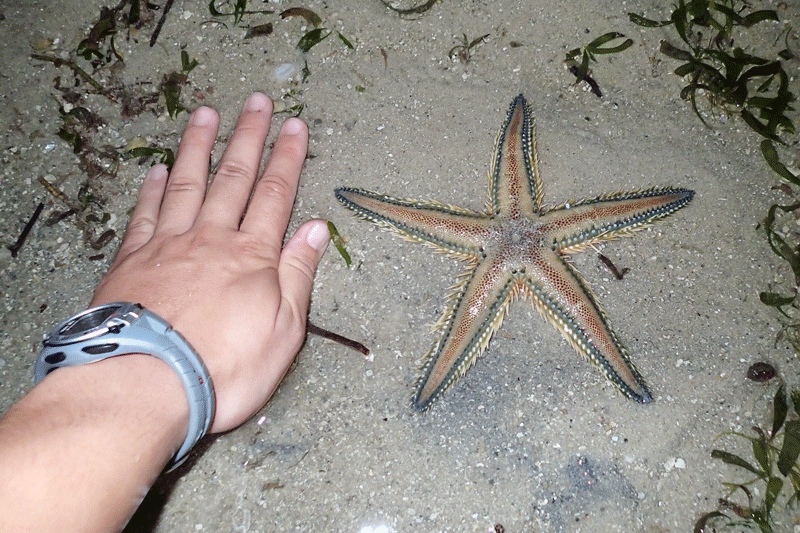 |
| Size of Astropecten seastar |
Not only did I found out how big this seastar was, I also felt how spiny it was while making attempts to handle the seastar. It has two sets of spines along the edge of its body.
 |
| First set of spines pointing upwards |
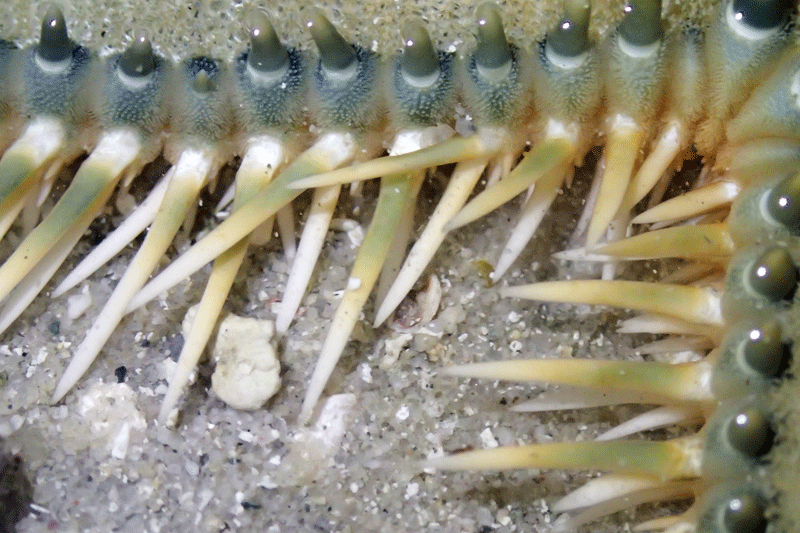 |
| Second set of spines along the edge of the seastar |
Such a pretty seastar comes with pretty orange underside.
 |
| Overview of the Astropecten seastar |
 |
| Underside of the seastar |
 |
| Tube feet? |
Here is a close up of the seastar's overview.
 |
| Close up of overview |
Here is the video of the Astropecten seastar burrowing into the sand.
Other types of seastars seen on this trip includes the
Common seastar (
Archaster typicus),
Brittle star, the
Knobbly seastar (
Protoreaster nodosus) and the Cyrene only
Pentaceraster seastar (
Pentaceraster mammilatus). I will share about the Knobbly seastar later in my post.
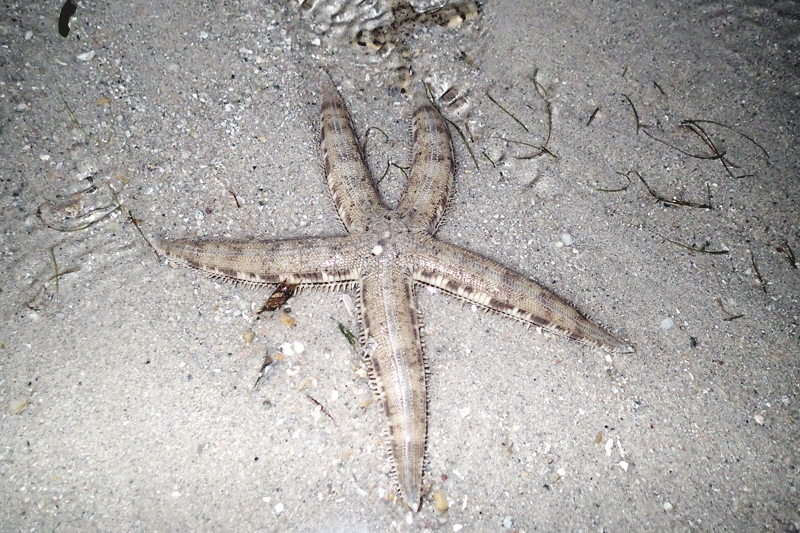 |
| Common seastar |
 |
| Brittle star |
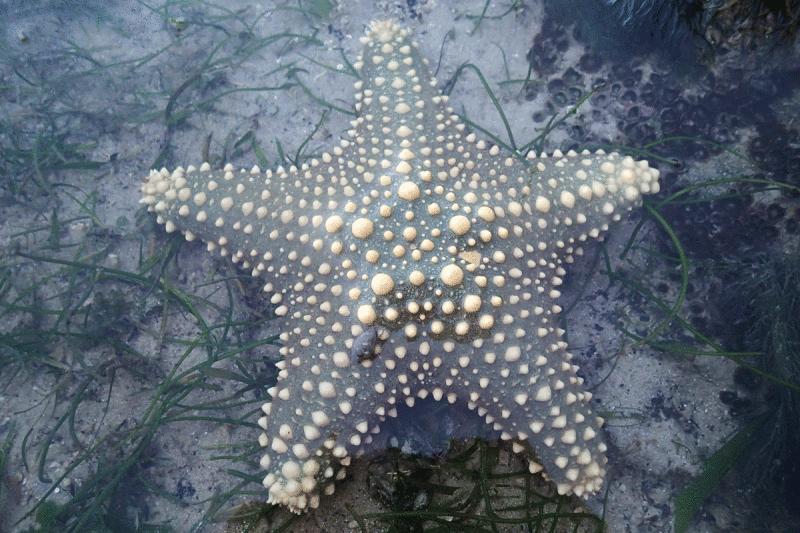 |
| Pentaceraster seastar |
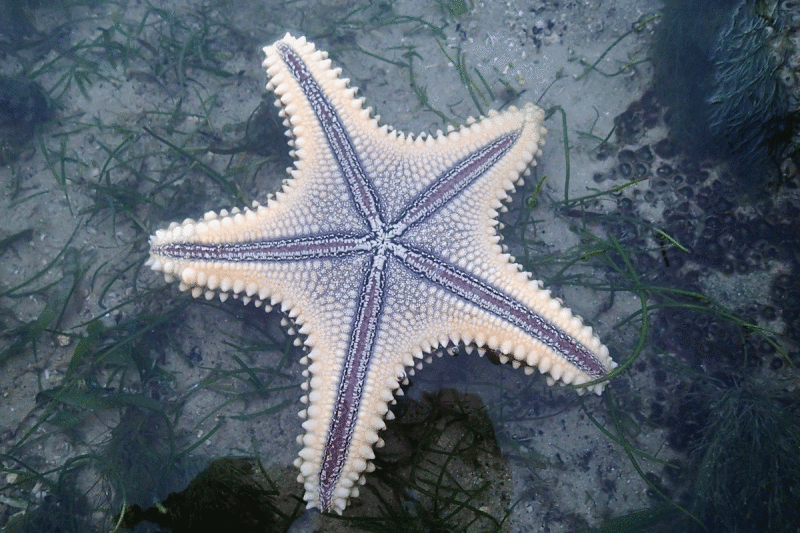 |
| Underside of Pentaceraster seastar |
This brittle star looks like it was feeding on some marine worm?
 |
| Brittle star feeding? |
Somehow, it Cyrene seems quite unfamiliar to me the moment I landed. Even the highest level of the sandbar looks different. The sand has shifted by some extent on Cyrene. Since I am already on Cyrene, I checked out the seagrass situation.
On the
Oval sea grapes seaweed (
Caulerpa racemosa) there were many isopods swimming and clinging onto the seaweed if we observe them carefully.
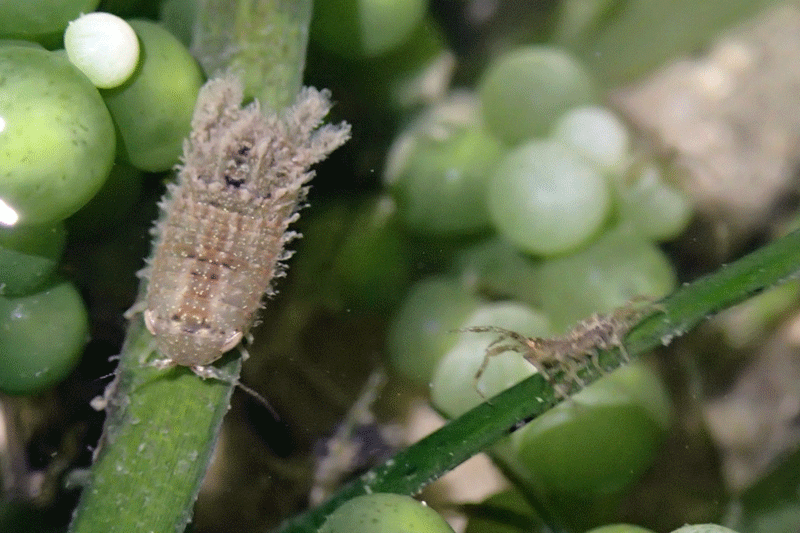 |
| Isopod |
Hiding on the seagraas blade is a famale shrimp with eggs.
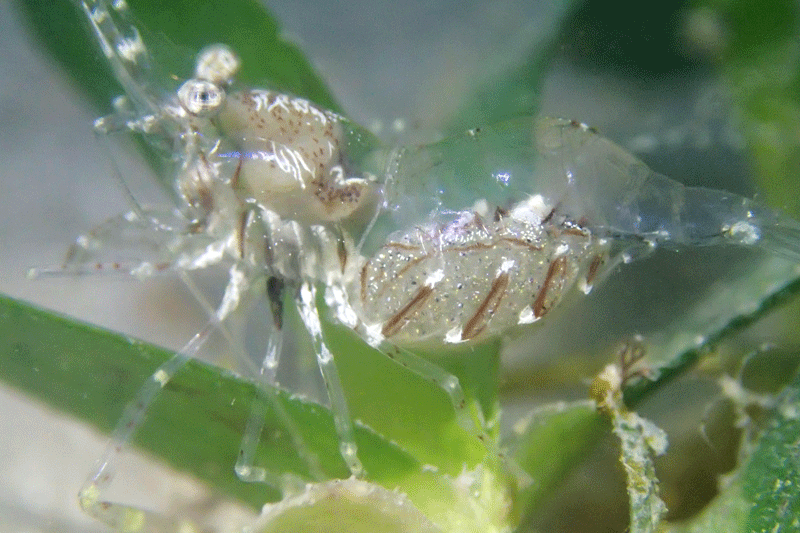 |
| Female shrimp carrying eggs |
 |
| Giant carpet anemone |
This poor octopus was stranded on the sand when the tide went out.
 |
| Stranded octopus |
I helped to shift the stranded octopus to a pool of water and it was relieved.
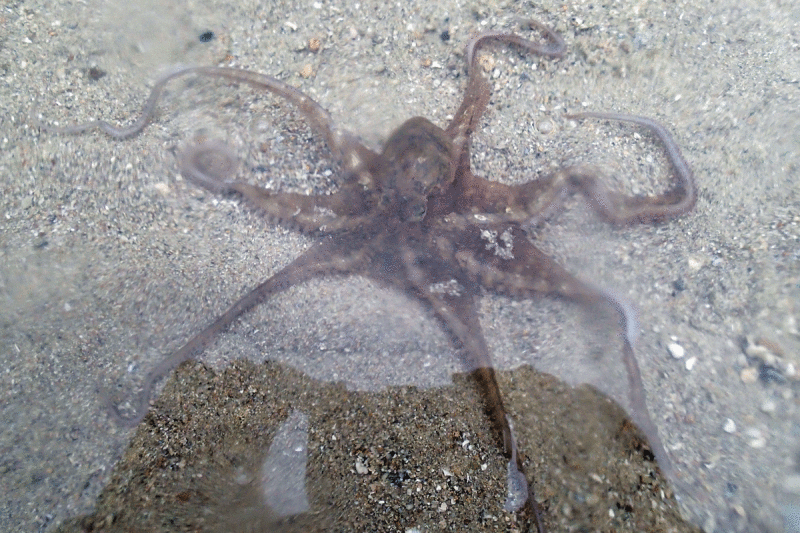 |
| Relaxed octopus |
Here is a video of the octopus and towards the end, it came towards me and placed one of its tentacles on my booties.
On the eve of Singapore's National Day, the knobbly seastars of Cyrene are out in full force. They come in different shape, number of arms, colour and arrangements.
The best highlight of this trip would be the live sighting of the Cone snail (Conus magus). Mei Lin did a check and told me that the last sighting was record close to 30 years ago. We have seen many dead cone snail shells but never have we seen the live animal until today and we have over 20 species of cone snails. The cone snail has a venomous dart like sting that is capable of killing humans. It should not be handled by bare hands.
 |
| Cone snail |
Thanks to Siong Kiat from the Raffles Museum of Biodiversity Research, we found the operculum of the cone snail. The cone snail has a very tiny operculum for its size.
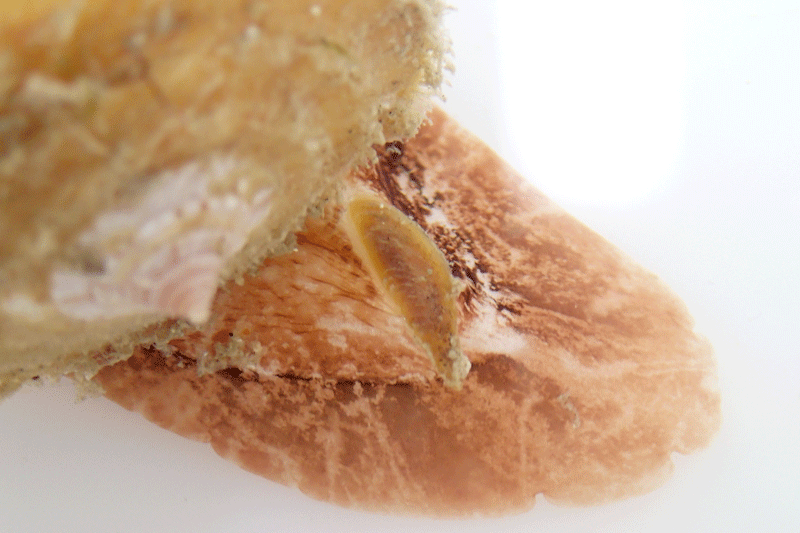 |
| Tiny operculum |
 |
| Cute eyes |
It was amazing to be one of those to be able to see a live cone snail after so long.
Read about the posts by others on this trip:























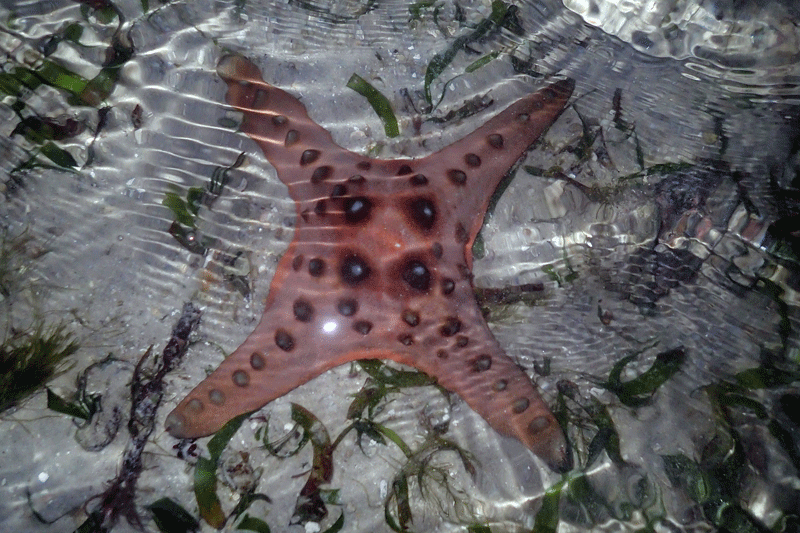
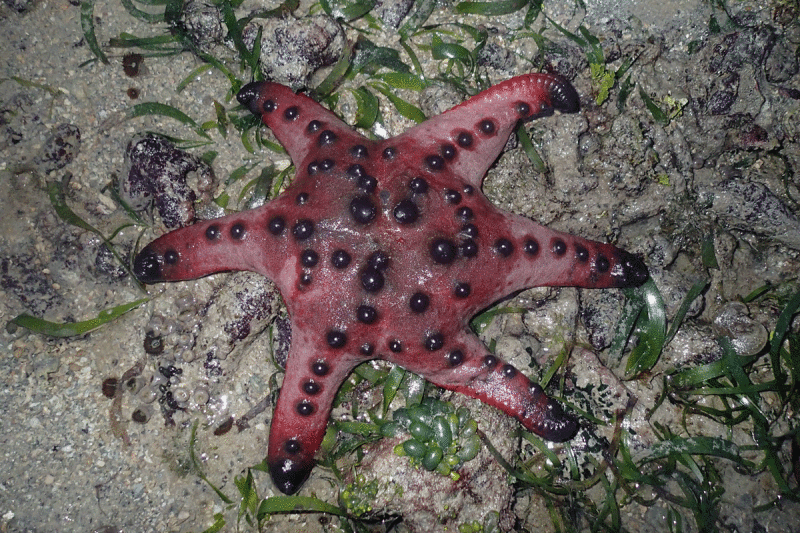

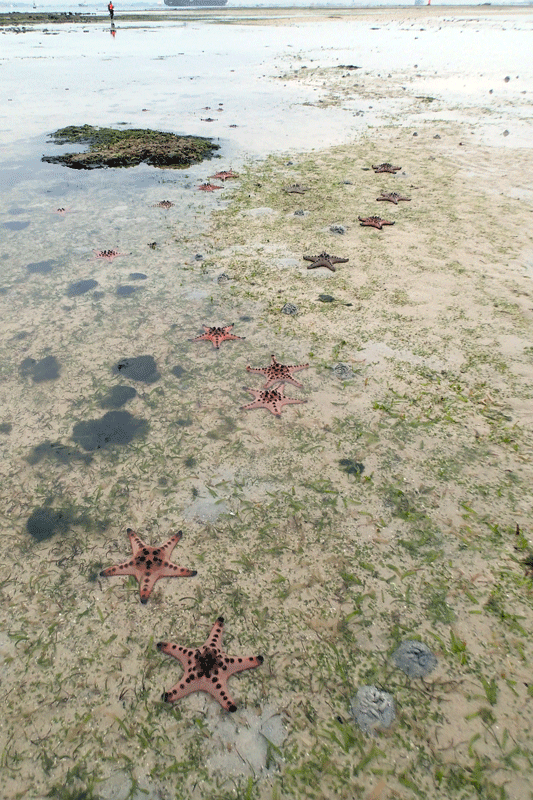
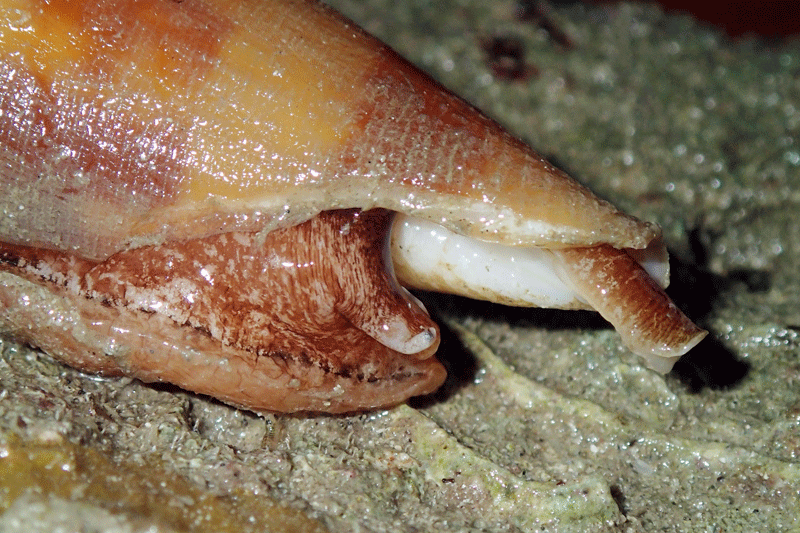
No comments:
Post a Comment